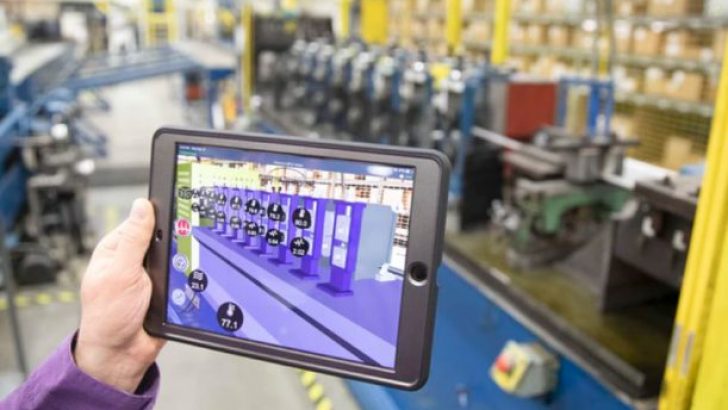Manufacturers Are Preparing For A Second COVID-19 Wave

With a second wave of COVID-19 now hitting many areas, manufacturers are bracing for its impact and leveraging more virtual technologies.
The Coronavirus pandemic has increased organizations’ reliance and appetite for additional automation technologies. Industry analysts say many manufacturers are looking to make these investments to increase efficiencies but also to maintain production cycles because of fears of a growing second wave of the virus.
The increased planning and use of automation continues as a central focus and business strategy as manufacturers ponder how to maintain operating amid lockdowns and social distancing. Everything from robotics, the Internet of Things (IoT), and virtual technologies are all being looked at or implemented.
These automation solutions are designed to reduce the time required to produce goods on the plant floor, leading to shorter industrial design cycles and lower production times.
COVID-19 Expedites Automation Needs
This has led to businesses and manufacturers implementing more automation solutions while replacing older assembly lines, subsequently identifying new production models and levels of efficiency. Furthermore, with a higher number of manufacturing employees and designers wary of getting sick from COVID-19, these technologies are increasingly getting implemented to either foster more social distancing or reducing the number of humans required on the plant floor overall.
Approximately 80% of manufacturers fully expect COVID-19 to have a financial impact on their business, as reported in a recent study for the National Association of Manufacturers (NAM)1.
What’s more, the report1 also illustrated that many of these manufacturers (53%) believe the pandemic will impact their operations.
Automotive Manufacturers
Large global automotive manufacturers like General Motors (GM) and Toyota have been at the forefront of automation, and COVID-19 has further increased their dependency on solutions.
During the summer, GM was forced to shuffle its staffing schedule at a plant in Missouri to accommodate a rising number of workers out on sick leave. At that time the state reached a record 1,092 new daily cases, up from only 292 daily cases earlier in the month2.
These auto assembly plants have begun using robots to automate a number of processes throughout its automotive factory and operations. Combined with technology such as Augmented Reality (AR) and Virtual Reality (VR), which create virtual environments for design, production and customer service, these solutions are aiding in maintaining industrial efficiencies and supply chain schedules.
Aviation Automation Potential
The aviation industry has made great strides recently where it has increasingly leveraged automation to enhance production cycles and drive down production costs. However, there are also a few examples of where the need for advanced technology simply hasn’t gone far enough, resulting in disastrous results.
Boeing’s fully automated initiative — known as FAUB, for fuselage automated upright build — has been known for relying on robots working in tandem to drill accurate and precise holes while fastening together metal panels held upright to build the outer frame of its jets.
However, few aviation manufacturers have leveraged a true cloud infrastructure for their AR/VR design and engineering teams, instead relying on “on-premise” data resources that prevent the ability to share knowledge across organizations. It is believed that this prevention of critical knowledge led Boeing design teams to improperly identify flaws in its 737 MAX airplane, which later on proved fatal and resulted in significant loss of life.
Cloud technology for technologies such as AR/VR enables greater information sharing since designers outside the organization can research critical safety elements in other buildouts.
Leveraging Cloud & Automation To Overcome Major Challenges
Manufacturers are overcoming these limitations by leveraging cloud-based (or remote server based) AR/VR platforms powered by distributed cloud architecture and 3D vision-based AI. These cloud platforms provide the desired performance and scalability to drive innovation in the industry at speed and scale.
Enterprise-grade high-quality AR/VR platforms require both performance and scale. However, existing systems such as MS HoloLens and others are severely limited in both aspects. Most enterprises have a rich repository of existing complex 3D CAD/CAM models created over the years. These 3D models may vary in their complexity (such as poly count, hierarchy, details, etc), making it difficult to run and excel within on-premise virtual platform environments, restricted by device limitations. This forces developers to decimate the contents (3D models/scenes) to fit to different mobile devices, spending months in the process and sacrificing on the overall quality of the experience.
As these virtual environments become richer and larger, the problem continues to compound. This cycle is repeated for each of the different AR/VR hardware platforms, making it difficult for any enterprise to move from experiments and pilots to full scale deployable solutions, thus stunting the speed of innovation and effectiveness
The device limitations also severely restrict the capability of existing AR/VR systems to generate and work with very fine mesh with large polygon count models and point clouds, which is essential to collocate and precisely fuse the virtual objects on top of physical objects in the real world with complex surfaces, and varied lighting and environment.
Manufacturers are overcoming this great challenge by leveraging AR/VR platforms powered by distributed cloud architecture and 3D vision-based AI. These AR/VR cloud platforms provide the desired performance, accuracy and scalability to drive innovation in the industry at speed and scale.
Manufacturers today are experiencing the next wave of technology innovation that will fundamentally alter the way they operate. This transformation is primarily driven by merging of the digital and physical world to create a better, smarter and more efficient way of operating. Immersive technologies such as AR/VR technologies are playing a pivotal role in this transformation. The organizations that take a leadership role will be the ones that not only leverage these technologies, but they will partner with the right technology provider to help scale appropriately without having to stunt technological growth.
Source: Dijam Panigrahi | industrytoday

